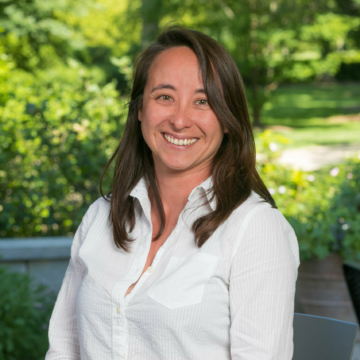Introduced diseases affect the health of trees and shrubs, and breeders are always seeking to find new sources of resistance.
At The Morton Arboretum, Dr. George Ware worked between 1968 and 1995 to acquire one of the largest and most extensive elm collections in the world to identify potential germplasm for breeding elms resistant to Dutch elm disease (DED). Ware identified chance seedlings in the collections that exhibited disease resistance. Some of this material was introduced into the trade through Chicagoland Grows®, such as the Accolade™ elm. The trees were also used as parents in the Arboretum’s Elm Improvement Program.
While these selections continue to prove resistant to DED, pathogens evolve much more rapidly than their hosts, and genetic diversity in the urban landscape is necessary to prevent future devastation of urban forests. To diversify the material available for DED-resistant elm plantings, the New Plant Development Program will continue Ware’s legacy elm breeding program using the Arboretum’s elm collection.
Other pests that the Arboretum’s tree introductions can resist or tolerate include elm leaf beetle, Japanese beetle, gypsy moth, and elm yellows.
Another major tree problem is the emerald ash borer (EAB), an introduced pest that has devastated native ashes in the forests of eastern North America and the Midwest. The destruction is evident in the forest canopy of the Chicago region, from the forest preserves to the developed landscapes of the suburbs.
In an effort to develop ash trees that can function as street trees without succumbing to EAB, the New Plant Development Program has joined researchers in the Center for Tree Science and the University of Notre Dame. Native green ashes (Fraxinus pennsylvanica) with EAB tolerance have been identified by researchers at the U.S. Forest Service in Delaware, OH. These ashes are referred to as lingering ashes, due to their living presence in stands of dead trees. Cloned material from these populations is being used in an ash breeding program at The Morton Arboretum in order to identify F1 hybrids with both EAB tolerance and good overall form.
In addition to the green ash breeding project, the New Plant Development Program works on developing Asian ash hybrids with improved form and EAB resistance for use as street trees.
More information:
